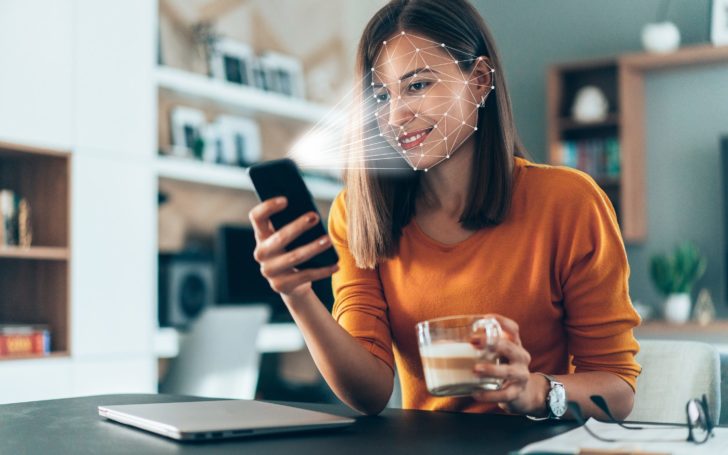Are you tired of manually inputting passwords and worried about security breaches? Enter FaceID, a cutting-edge facial recognition technology that combines security and convenience in one package. In this comprehensive guide, we will dive deep into the world of FaceID, exploring its inner workings, setup process, compatibility, and usage for various functions. Say goodbye to the hassle of remembering complex passwords and embrace the future of biometric authentication.
Unlock the power of FaceID and learn how this advanced security feature can revolutionize the way you interact with your iPhone or iPad. Read on to discover how this fascinating technology works, how to set it up, and how it adapts to your changing appearance and mask usage, all while ensuring the utmost security and privacy.
Table of Contents
Key Takeaways
Apple’s FaceID is a secure and private facial recognition system, utilizing the TrueDepth camera system to create depth maps for authentication.
Setting up FaceID on an iPhone or iPad involves creating a depth map of the user’s face that is stored in the Secure Enclave for security.
The probability of unauthorized access with FaceID is very low due to its combination of components, providing users with increased security and privacy.
Understanding FaceID: Apple’s Advanced Security Feature

Apple’s apple face id is a state-of-the-art facial recognition security system, engineered to unlock devices, validate payments, and authenticate applications effortlessly using face id. Gone are the days of struggling to remember complex passwords or dealing with the limitations of fingerprint-based Touch ID. FaceID is supported on iPhone X and subsequent models, along with certain iPad Pro models, offering users an uninterrupted, secure authentication experience.
According to Apple, FaceID works by capturing and analyzing over 30,000 data points on your face to create a unique mathematical representation. This allows the TrueDepth camera system to recognize and authenticate your face even if you change your appearance, such as growing facial hair or wearing glasses. With FaceID, you can effortlessly unlock your device, authorize Apple Pay transactions, and access various apps and websites that support biometric authentication.
The TrueDepth Camera System: How FaceID Works
FaceID relies on the sophisticated TrueDepth camera system to capture detailed facial data and authenticate your identity. This camera system consists of several components, including:
An infrared camera
Dot projector
Flood illuminator
Proximity sensor
All these components work together to create a secure and accurate facial recognition system.
The TrueDepth camera system operates by:
Identifying motion and measuring the required light intensity for face recognition through proximity and ambient light sensors when a face is detected
Capturing 2D images of the user’s face using the flood illuminator
Casting 30,000 dots to construct a 3D depth map using the dot projector, which uses the 2D infrared images as a reference
Processing and converting the combined data into a numerical value
Encrypting the numerical value using machine learning algorithms
Comparing the encrypted value to a stored value in the Secure Enclave
This comprehensive process ensures that the scanned face matches the one in the database, providing secure access to your device.
Infrared Camera and Dot Projector
The role of the infrared camera and dot projector involves significant data capture and depth map creation of the user’s face. The infrared camera utilizes infrared light to illuminate the face and capture images, while the dot projector emits thousands of infrared dots onto the user’s face, which are then registered by the FaceID camera to form a three-dimensional map of the face. This depth map is used for precise facial recognition and cannot be deceived by a photograph.
The infrared technology employed by the camera and dot projector allows FaceID to function in various lighting conditions, including low lighting and complete darkness. The infrared camera captures images of the dot pattern and the infrared light reflected back from your face, enabling FaceID to accurately recognize and authenticate your face even in challenging lighting conditions.
Flood Illuminator and Proximity Sensor
In FaceID technology, the flood illuminator and proximity sensor form key elements of the TrueDepth camera system. The flood illuminator emits infrared light at the user’s face, enabling the system to detect the user even in low-light conditions. This ensures consistent and precise face detection regardless of the lighting conditions.
The proximity sensor, on the other hand, assists the TrueDepth camera system in determining the distance between the user’s face and the iPhone. Proximity sensors detect the user’s face at various distances through the utilization of electromagnetic fields, light, or sound. This ensures that the FaceID authentication process only activates when the user is at a suitable distance from the device.
Neural Engine and Secure Enclave
The processing and authentication of facial data captured by the TrueDepth camera system depend heavily on two components: the neural engine and Secure Enclave. Here’s how they work together:
The neural engine converts data provided by the TrueDepth platform into mathematical representations.
These mathematical representations are then encrypted to ensure security.
The encrypted data is stored in the file system for further processing and authentication.
The Secure Enclave, on the other hand, serves to store and secure facial data, thus ensuring the integrity of FaceID even in the event of a compromise of the iOS or iPadOS. This isolated coprocessor is integrated within the Apple Silicon package, such as the A15 or M1, and communicates with the parent chip through an interrupt-driven “mailbox”.
Together, the neural engine and Secure Enclave provide a robust and secure facial recognition system that safeguards your sensitive data and keeps your device secure.
Setting Up FaceID on Your iPhone or iPad

Establishing FaceID on your iPhone or iPad is a simple operation, achievable during device activation or via the Settings app. To set up FaceID, navigate to the Settings app and select the Face ID & Passcode option, where you will find the option to set up Face ID. Once configured, you can adjust FaceID settings as needed to accommodate your preferences and various functions, making it easy to unlock your iPhone.
The initial setup process for FaceID requires users to follow these steps:
Scan your face twice by rotating your head in a circular motion.
This creates a detailed and accurate depth map of your face.
The depth map is then stored securely in the Secure Enclave on your device.
Follow the onscreen instructions and ensure that your face is properly positioned within the frame.
Once set up, you can enjoy the convenience and security of FaceID on your device.
Initial Setup Process
During the initial setup process, you will be prompted to scan your face by rotating your head in a circular motion twice. This ensures that the TrueDepth camera system captures a detailed and accurate depth map of your face, which is necessary for the FaceID authentication process. It is important to hold your device between 10 to 20 inches away from your face in a well-illuminated area for optimal results.
Once the facial scans are complete, the FaceID system will store the captured data securely in the Secure Enclave on your device. This ensures that your facial data remains protected and inaccessible to unauthorized individuals, providing a secure and private authentication method for your iPhone or iPad.
Adjusting FaceID Settings
FaceID settings can be adjusted to accommodate various functions and alternate appearances, ensuring a seamless and secure authentication experience. To adjust FaceID settings, follow these steps:
Navigate to the FaceID & Passcode section of the Settings app on your device.
Enable or disable certain features, such as requiring a passcode when wearing a face mask.
Set up an alternate appearance for significant changes in your look.
For users with heavy makeup or multiple looks involving changes to hair, facial piercings, or glasses, it is recommended to set up alternate appearances in the Settings app to ensure successful FaceID setup. This allows FaceID to recognize and authenticate your face even when your appearance changes, providing a secure and convenient authentication method that adapts to your needs.
Utilizing FaceID for Various Functions
FaceID offers diverse uses, including authorizing Apple Pay transactions, confirming App Store downloads, and logging into third-party apps and websites that support biometric authentication. This seamless and secure method makes face id work efficiently for performing these tasks without the need to remember complex passwords or input sensitive information manually. With the way face id works, users can enjoy a convenient and secure experience.
By utilizing FaceID for these functions, you can enjoy a more convenient and secure authentication experience. Whether you’re making a purchase with Apple Pay or logging in to your favorite app, FaceID ensures that your sensitive data remains protected while providing a quick and effortless authentication process.
Authorizing Apple Pay Transactions
FaceID can securely authorize Apple Pay transactions for both in-store and online purchases, ensuring that your financial information remains protected during the transaction process. To authenticate a purchase, simply double-click the side button on your iPhone and glance at your device to complete the FaceID scan.
With FaceID, you no longer need to worry about the security of your financial transactions or the hassle of inputting payment information manually. This advanced facial recognition technology provides a secure and convenient method for authorizing Apple Pay transactions, giving you peace of mind while making purchases.
Signing into Apps and Websites
FaceID can be used to sign into apps and websites that support biometric authentication, providing a smooth and secure login experience. Many popular apps that support FaceID sign-in include:
Facebook
Twitter
Snapchat
Instagram
iOS Health app
With the ability to use Face ID, you can quickly access your accounts without the need for passwords.
To use FaceID for signing into apps and websites, simply follow these steps:
Open the app or website that supports FaceID authentication.
Look for the option to enable FaceID authentication, usually found in the settings or account section.
Follow the prompts to set up FaceID authentication for the app or website.
Once enabled, you can securely log in to your account by simply glancing at your iPhone or iPad, ensuring a seamless and secure authentication process that keeps your sensitive data protected.
FaceID Compatibility: iPhones and iPads
Here is the text split into paragraphs:
iPhones, starting from iPhone X, and select iPad models, including the iPad Air and iPad Pro, are compatible with FaceID. This advanced facial recognition technology provides a secure and convenient authentication method for users of these devices, ensuring a seamless and secure user experience.
As Apple continues to develop and improve its FaceID technology, it is likely that we will see further integration with future iPhone and iPad models. Apple claims that for now, users of compatible devices can enjoy the convenience and security that FaceID provides, making it an essential feature for those looking to upgrade to a new iPhone or iPad.
Learn more, visit How can I set up Touch ID or Face ID for iOS?.
Adapting FaceID to Changing Appearances and Mask Usage
With its adaptability to changes in appearance and mask usage, FaceID ensures ongoing functionality and security, even when your face is partially covered or your looks alter. This advanced facial recognition technology can recognize and authenticate your face even if you change your hairstyle, grow facial hair, or wear glasses.
By updating its facial data to accommodate new looks and enabling FaceID to work with masks, users can continue to enjoy the convenience and security of FaceID in various situations. Whether you’re sporting a new look or wearing a mask for health and safety reasons, FaceID ensures that your device remains secure and accessible.
Updating FaceID for New Looks
FaceID can update its facial data to accommodate new looks, such as facial hair or glasses, but may require passcode validation for major changes. By setting up alternate appearances in the Settings app, you can ensure successful FaceID setup even when your appearance changes.
This adaptive feature allows FaceID to recognize and authenticate your face even when your appearance changes, providing a secure and convenient authentication method that adapts to your needs. Whether you’re growing a beard or changing your hairstyle, FaceID ensures that your device remains secure and accessible.
Using FaceID with Masks
Users can set up FaceID to work with masks using an Apple Watch or the iOS 15.4 update, allowing for secure authentication even while wearing a mask. This feature scans the features around your eyes to authenticate your identity when you are wearing a mask, providing a secure and convenient authentication method even in challenging conditions.
By enabling FaceID with masks, you can continue to enjoy the convenience and security of FaceID even when your face is partially obscured. This adaptive feature ensures that your device remains secure and accessible, providing a seamless authentication experience in various situations.
Security and Privacy: Is FaceID Safe?
As a biometric authentication method, FaceID offers enhanced security and privacy. It has the following features:
Minuscule probability of unauthorized access
Strong data protection via the Secure Enclave
Odds of an arbitrary person unlocking a device with FaceID are less than 1 in 1,000,000
These features elevate the security of FaceID over TouchID.
The Secure Enclave, an isolated coprocessor, safeguards facial data and maintains FaceID integrity, even if the iOS or iPadOS becomes compromised. By employing advanced security measures to encrypt and protect FaceID data, the Secure Enclave provides an additional layer of security for user data, making FaceID a safe and reliable authentication method.
Probability of Unauthorized Access
The probability of a random person unlocking a device with FaceID is less than 1 in 1,000,000, making it more secure than TouchID, which has a probability of 1 in 50,000. This high level of security is attributed to:
The accuracy and uniqueness of facial recognition technology
The advanced algorithms used by the TrueDepth camera system
The depth-sensing technology employed by FaceID
However, it is important to note that biometric authentication is not infallible and can still have vulnerabilities. For example, security researchers have demonstrated that they were able to successfully bypass FaceID user authentication and gain access to the iPhone through the use of specially crafted masks. Despite these vulnerabilities, FaceID remains a secure and convenient authentication method for the average user.
Protecting Your Data with Secure Enclave
The Secure Enclave is an isolated coprocessor integrated within the Apple Silicon package, such as the A15 or M1, that provides the following features:
Protects facial data
Ensures the integrity of FaceID
Kept separate from the main processor
Communicates with the parent chip through an interrupt-driven “mailbox”
Employs advanced security measures to encrypt and protect FaceID data
By providing these features, the Secure Enclave adds an additional layer of security for user data.
In the event of a compromise of the iOS or iPadOS, the Secure Enclave ensures that your facial data remains protected and inaccessible to unauthorized individuals. This dedicated secure subsystem safeguards your sensitive information and guarantees the safety of the facial data on your device, making FaceID a secure and private authentication method.
Summary
FaceID is an advanced facial recognition technology that provides a secure and convenient authentication method for iPhone and iPad users. With its sophisticated TrueDepth camera system, adaptive features for changing appearances and mask usage, and robust security measures through the Secure Enclave, FaceID offers a seamless and secure user experience for unlocking devices, authorizing payments, and signing into apps and websites.
Embrace the future of biometric authentication and unlock the power of FaceID. Whether you’re upgrading to a new iPhone or setting up FaceID on your iPad, this comprehensive guide has provided you with the knowledge and tools needed to make the most of this cutting-edge technology. Enjoy the convenience and security that FaceID has to offer and experience a new level of authentication that adapts to your needs.
Frequently Asked Questions
How do I enable Face ID?
To enable Face ID, go to Settings > Face ID & Passcode. Enter your passcode and turn on the required toggle switches for iPad Unlock, Wallet & Apple Pay, and Password Autofill. Position your face in front of your device and gently move your head to complete the setup.
Can Face ID be fooled by a photo?
Face ID technology was developed by Apple to protect users’ data and information from potential security threats. Consequently, it is not possible to unlock the iPhone with a photograph or printed picture, as Face ID cannot be fooled in this manner.
Why has Face ID suddenly stopped working?
Face ID might suddenly stop working due to deeper software issues that can be resolved by updating your iPhone to the latest version of iOS. Additionally, make sure that your eyes, nose, and mouth are visible to the TrueDepth camera and clean smudges and debris from the screen that could block the sensor. Furthermore, a shattered screen or scratched screen protector, and some thick and ultra-rugged iPhone cases can also impact Face ID functionality.
Can Face ID be repaired?
Fortunately, Face ID issues can generally be fixed with some care and attention. However, if the final pull tab is damaged, you’ll need to take your device to Apple for repair.
How secure is FaceID compared to TouchID?
FaceID is significantly more secure than TouchID, with a probability of unauthorized access being 1 in 1,000,000 compared to 1 in 50,000 for TouchID.









